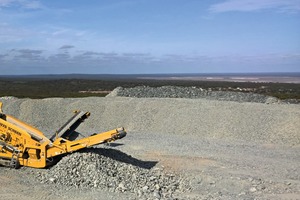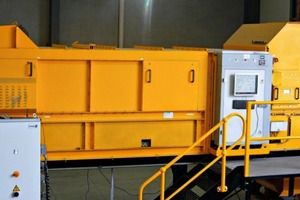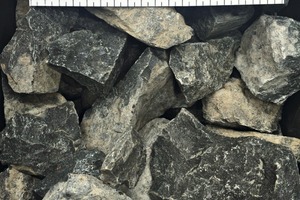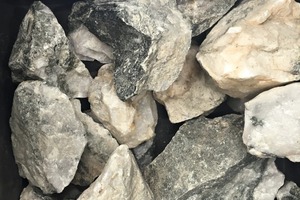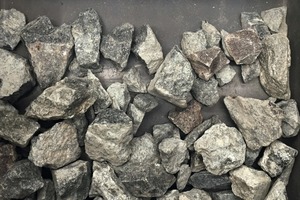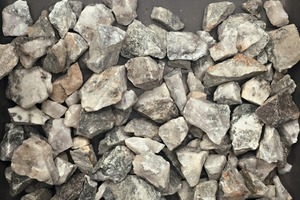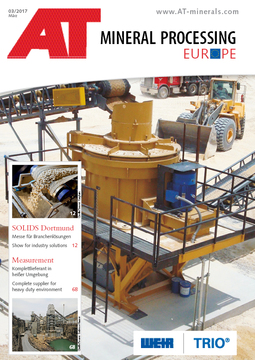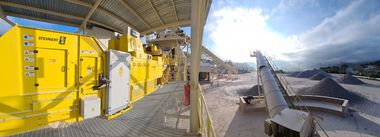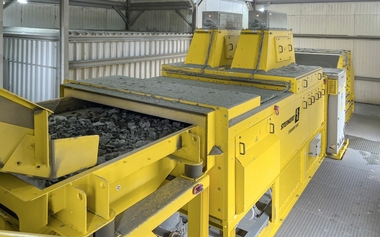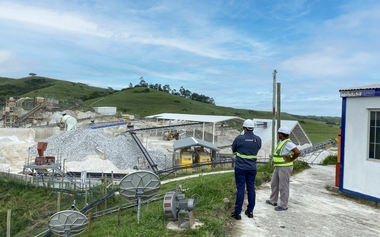Upgrading low grade gold ore stockpiles
Sensor-based automatic ore sorting technologies are used in the minerals industries to efficiently remove waste and sub-marginal grade material from crushed and screened run of mine (ROM) ore, producing a coarse (typically >10 mm) upgraded pre-concentrate at an early stage in the mineral processing circuit. This avoids additional energy intensive downstream processing of this rejected component of the ROM feed, leading to lower unit operating costs and reduced tailings disposal volumes.
Testwork on bulk low grade gold ore stockpile samples from Central Norseman Gold Proprietary Limited has been conducted, indicating high gold recoveries as well as high material rejection rates. A financial model, based on these results, evaluates grade sensitivity and identifies a minimum stockpile grade for adequate financial returns. The base case modelling estimates that the ex-stockpile grade (including the fines by-passed fraction) can be more than doubled through ore sorting and that the project will be highly viable with strong cash flow generation at stockpile grades as low as 0.7g/t gold. The modelling will enable the company to benchmark ore sorting options against stockpile reclaim and screening operations currently employed.
Background
The historic Norseman gold mining operation, approximately 200 km south of Kalgoorlie in Western Australia, has a production history dating back to 1894. It is located at the southern extent of the Norseman-Wiluna Greenstone Belt in the Eastern Goldfields Province of the Yilgarn Block in Western Australia. The underground mining operations have been primarily based on high grade narrow vein quartz reef mining, supplemented by some open cut mining of lower grade ores. It was recognised in 2014 as Australia’s longest continually running gold mining operation with 120 years of operation and the extraction of an estimated 5.5 million ounces of gold.
Central Norseman Gold Pty Ltd (Norseman Gold) is the current owner and operator of the Norseman mine and treatment plant. Since the 2. quarter 2015, driven by improvements in the price of gold, Norseman Gold has re-started limited operations including low grade reclaim mining and screening of dumps and stockpile following 10 months of trials at various locations. Ore is treated through the Phoenix mill, which is a conventional gold processing plant (primary crushing, SAG mill, ball mill, gravity separation and carbon in leach (CIL) gold recovery) with a nameplate capacity of 720 000 t/a.
Low grade stockpiles
With such a long history of narrow vein high grade underground mining, it is not surprising that in the vicinity of the various mining operations there are extensive surface stockpiles of what was considered, at the time of mining, sub-marginal low grade ore. These stockpiles would have been generated through underground development on-reef in sub marginal ground or from parcels of low grade ‘halo’ ore mined from the highly variable grade nuggety reef systems.
One of the major stockpiles comprises low grade run of mine (ROM) ore extracted from the Bullen, Ajax and St Pats underground mines. The Bullen mine was commenced in 1991 and is accessed via a decline. The Bullen low grade stockpile is situated approximately two kilometres from the Phoenix mill. It is estimated that the stockpile contains approximately 1.2-1.5 million t of low grade ore. No systematic program of mining data review or sampling and assaying has been undertaken in order to determine an accurate estimate of the grade profile or an average grade of the Bullen low grade stockpile.
Selection of sorting technology
In the case of Bullen low grade stockpile samples obtained from Norseman Gold, initial evaluation confirmed that it was probable that either colour sorting (utilising the colour difference between the light coloured quartz reef and the darker gangue minerals) or XRT sorting (utilising the consistent atomic density differential between quartz reef and gangue minerals) would be most likely to achieve effective pre-concentration.
XRT was chosen as the preferred option for evaluation testwork, due to the fact that in most applications it is a dry process. The sorter feed does not require washing or scrubbing to remove surface dust or other adherents due to the fact that the absorption signal used to sort individual rock particles is derived from the x rays passing through the full thickness of the sample. In contrast to this, colour sorting will be affected by surface layers of dust or other materials and typically requires a wet scrubbing process prior to sorting to remove any interfering surface layer.

